Renovated with respect and sensitivity
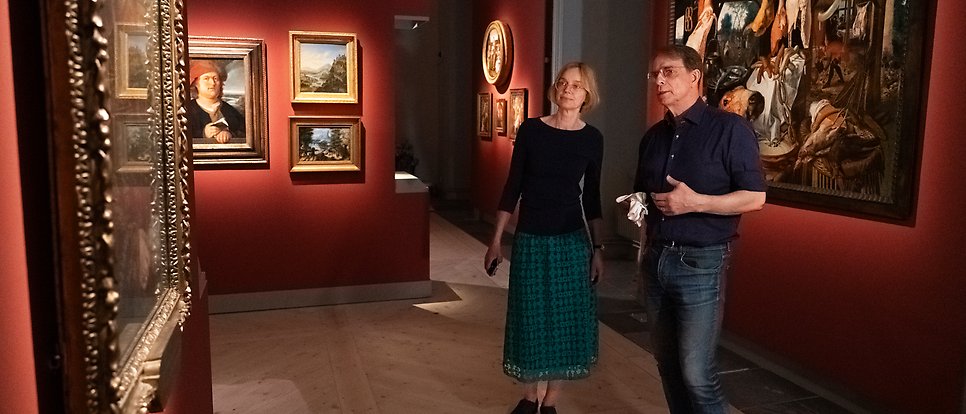
Curator Cecilia Ödman and Museum Director Mikael Ahlund in the brand-new exhibition showcasing the University’s art collection. Behind them is the painting “Slaktarboden” (Butcher’s stall) from 1551. Photo: Marcus Holmqvist
The University’s art collection has moved back home and now has an entire floor to itself. The museum has a new entrance hall, and many of the artefacts on display are new as well. In line with the reopening of Gustavianum, visitors are invited to take an exciting journey between different worlds, eras and artistic expressions.
There is a flurry of activity inside Gustavianum ahead of the reopening on 24 June. Much drilling and banging can be heard; a large canvas is being restretched; lamps are being put in place using cherry pickers.
Watch the video in which museum staff show you some of their favourite artefacts:
The two student assistants Emma Edling and Alva Karlsson Ling pull off the protective plastic from a large stand they have been working on. Inside is a 4,000-year-old Egyptian sarcophagus together with the artefacts that accompanied the deceased. Here you can see slippers, a few sticks and about 40 small wooden human figures set up in different scenes, known as tomb models.
“It’s great that we are the ones who built these models. You create an emotional connection with them. It almost feels a little upsetting that we won’t be able to be so close to them anymore,” says Edling.
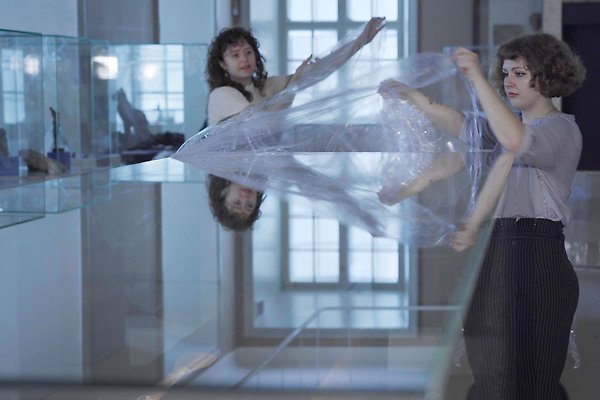
Emma Edling and Alva Karlsson Ling took on roles as student interns to help put together the exhibitions. Now they will continue working as guides. Photo: Marcus Holmqvist
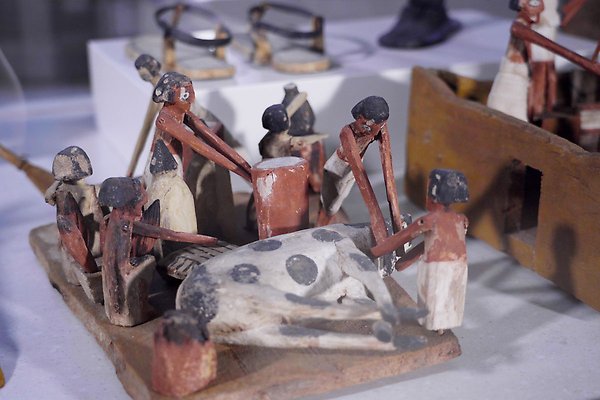
Models that often depicted different scenes were found in the tombs of royalty and high priests. A slaughter is depicted here. The wooden figures are original, 4,000 years old. Photo: Marcus Holmqvist
As a student guide, she will continue to talk about the artefacts that she has come to know so well. Together with the other guides, she will also guide visitors through a lot of new things, such as the Augsburg Art Cabinet. Many have seen it before, but thanks to stands covering an entire wall, visitors can now see as many as 600 artefacts from the cabinet that have never been displayed before.
Another new feature is that the entrance to the museum has been moved to the other side of the building. A reception area has also been built to greet visitors as soon as they enter the building. However, the main focus of the renovation has been to adapt the environment so that artefacts sensitive to light and climate can be exhibited.
“There is now a lot here that we have not previously been able to show because it had not been climate-adapted or lacked sufficiently high security levels,” notes Museum Director Mikael Ahlund.
A walk through the history of art
During our visit, Ahlund is in the process of directing where all the paintings will hang. In the newly renovated Gustavianum, an entire floor has been dedicated to the University’s art collection. The works have been donated to the University over the years and depict kings, university chaplains, biblical motifs, food and animals, among much else.
The idea is to be able to walk through the history of art, from the Renaissance to modern times. For example, the collection features the world’s first still life. The painting known as "Slaktarboden" (Butcher’s stall) from 1551 depicts a market stall filled with different kinds of meat. Ahlund wanders on and stops at a small painting in blue tones.
“I think this is one of the most exciting paintings we have in this collection. One of the first landscapes in art history, if I can go as far as to say that. It’s a world landscape from the early 16th century.”
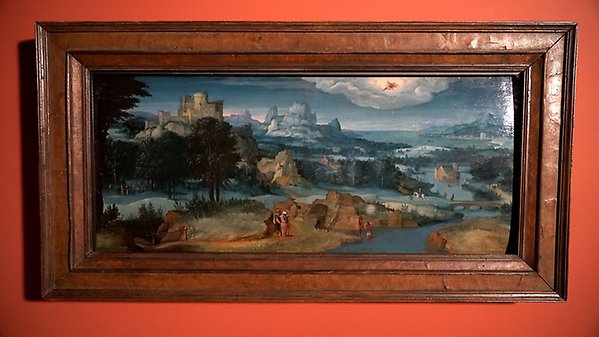
"I think this is one of the most exciting paintings we have in this collection. One of the first landscapes in art history, if I can go as far as to say that", says Ahlund
Different worlds in a small space
Gustavianum was built in the 1620s and has served as the University’s museum since 1997. Renovating in this kind of environment requires a sensitive touch.
“It has been great fun working on this building. It has its special conditions, but it also requires respect. This is why the exhibitions are fairly low-key, so as not to compete with the environment in which they’re placed,” explains Ahlund.
The size of the building has also forced them to think carefully about what they want to showcase.
“There is only room for a limited selection, but this also increases the intensity and excitement. You can easily wander between different worlds and find something exciting to look at here,” he continues.
Sandra Gunnarsson
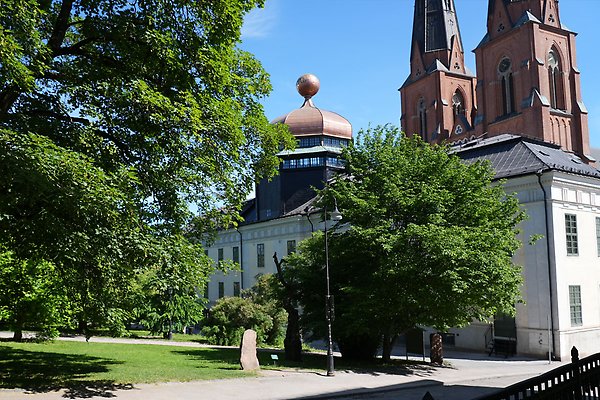
The museum will open to the public on 24 June. From this date, visitors will use the entrance facing the University Main Building. Photo: Daniel Olsson
